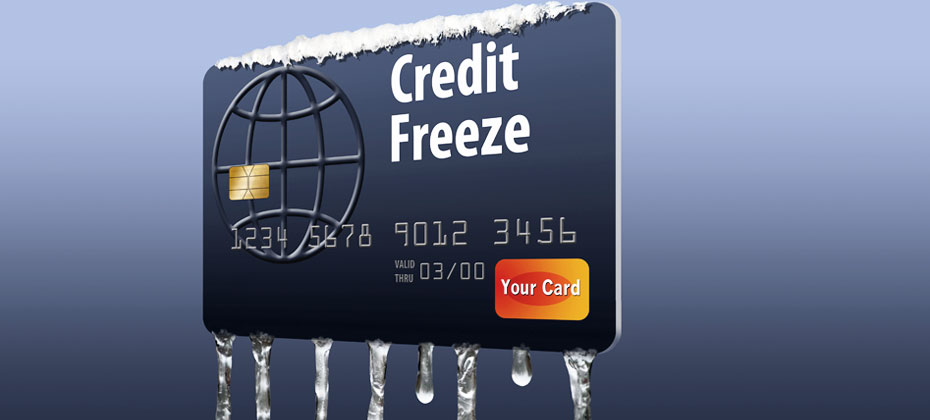All posts by Guest Contributor

The economy remains steady, maintaining a positive outlook even though the GDP growth slowed in the first quarter. Real estate is holding ground even as rates rise. We’ve reached a 7-year high in 30-year fixed-rate mortgages, which could have a longer-term effect on this market. Bankcard may be reaching its limit — outstanding balances hit $764 billion and delinquency rates continue to rise. While auto originations were flat in Q1, performance is improving as focus moves away from subprime lending. The economy remains steady as we transition from 2017. Keep an eye on inflation and interest rates in regard to their possible short-term economic impact. Learn more about these and other economic trends with the on-demand recording of the webinar. Watch now

According to our recent research for the State of Alternative Credit Data, more lenders are using alternative credit data to determine if a consumer is a good or bad credit risk. In fact, when it comes to making decisions: More than 50% of lenders verify income, employment and assets as well as check public records before making a credit decision. 78% of lenders believe factoring in alternative data allows them to extend credit to consumers who otherwise would be declined. 70% of consumers are willing to provide additional financial information to a lender if it increases their chance for approval or improves their interest rate. The alternative financial services space continues to grow with products like payday loans, rent-to-own products, short-term loans and more. By including alternative financial data, all types of lenders can explore both universe expansion and risk mitigation. State of Alternative Credit Data

There is a delicate balance in delivering a digital experience that instills confidence while providing easy and convenient account access. When it comes to a frictionless, secure customer experience, our 2018 Global Fraud and Identity Report research showed: 52% of businesses have chosen to prioritize the user experience over detecting the mitigating fraud. 78% of consumers will create an account to complete ecommerce purchased because it is a trusted brand/website. 60% of consumers will follow through with a transaction even if they have forgotten their user name or password. Consumers believe that having simple, instant and easy-to-access verification methods are important to their experience when shopping online. Are your providing this? 2018 Global Fraud and Identity Report

Hispanics are not only the fastest growing minority in the United States, but according to the Hispanic Wealth Project’s (HWP) 2017 State of Hispanic Homeownership Report, they would prefer to own a home rather than rent. Hispanic Millennials—who are entering their home-buying years—are particularly eager for homeownership. This group is educated, are entrepreneurs and business owners that over index on mobile use, and 9 of 10 say wanting to own a home is part of their Hispanic DNA. For them, it’s not a matter of if but when and how they will become homeowners. An optimistic outlook is also a trait of Hispanic Millennials, who generally are more positive about the future than the average Millennial. They are also confident in their ability to handle different types of tasks that are part of their day-to-day lives. And at 35 percent, the share of bilingual Hispanic Millennials with a household income of $100,000 or more is consistent with U.S. Millennials as a whole Homeownership challenges Yet, despite their optimism and goal of homeownership, Hispanic homeownership at 46.2 percent lags when compared to the overall U.S. home ownership rate of 63.9 percent in 2017. There are signs the gap could narrow; Hispanics are the only demographic to have increased their rate of homeownership for the past three years. Moreover, the report shows Hispanics are responsible for 46.5 percent of net U.S. homeownership gains since 2000. Still, the 2017 State of Hispanic Homeownership Report notes that a shortage of affordable housing, prolonged natural disasters in states with a significant Hispanic presence (California, Florida, Texas), and uncertainty over immigration policy could hinder Hispanic homeownership growth. An opportunity to reach Hispanics It seems most Hispanic Millennials will strive for homeownership at some point in their life, as they believe owning a home is best for their family’s future. With no convincing needed, there is a tremendous opportunity for mortgage providers to look deeper into the reasons behind Hispanic Millennials’ optimism to determine how to insert themselves into that dynamic. Research highlights the importance of creating interest in financial advice and making this a potential means of gaining trust. Hispanic Millennials who gain a better understanding of the benefits—not only for them but for generations to come—and costs of owning a home may translate their confidence into action.

In my first blog post on the topic of customer segmentation, I shared with readers that segmentation is the process of dividing customers or prospects into groupings based on similar behaviors. The more similar or homogeneous the customer grouping, the less variation across the customer segments are included in each segment’s custom model development. A thoughtful segmentation analysis contains two phases: generation of potential segments, and the evaluation of those segments. Although several potential segments may be identified, not all segments will necessarily require a separate scorecard. Separate scorecards should be built only if there is real benefit to be gained through the use of multiple scorecards applied to partitioned portions of the population. The meaningful evaluation of the potential segments is therefore an essential step. There are many ways to evaluate the performance of a multiple-scorecard scheme compared with a single-scorecard scheme. Regardless of the method used, separate scorecards are only justified if a segment-based scorecard significantly outperforms a scorecard based on a broader population. To do this, Experian® builds a scorecard for each potential segment and evaluates the performance improvement compared with the broader population scorecard. This step is then repeated for each potential segmentation scheme. Once potential customer segments have been evaluated and the segmentation scheme finalized, the next step is to begin the model development. Learn more about how Experian Decision Analytics can help you with your segmentation or custom model development needs.

Marketers are keenly aware of how important it is to “Know thy customer.” Yet customer knowledge isn’t restricted to the marketing-savvy. It’s also essential to credit risk managers and model developers. Identifying and separating customers into distinct groups based on various types of behavior is foundational to building effective custom models. This integral part of custom model development is known as segmentation analysis. Segmentation is the process of dividing customers or prospects into groupings based on similar behaviors such as length of time as a customer or payment patterns like credit card revolvers versus transactors. The more similar or homogeneous the customer grouping, the less variation across the customer segments are included in each segment’s custom model development. So how many scorecards are needed to aptly score and mitigate credit risk? There are several general principles we’ve learned over the course of developing hundreds of models that help determine whether multiple scorecards are warranted and, if so, how many. A robust segmentation analysis contains two components. The first is the generation of potential segments, and the second is the evaluation of such segments. Here I’ll discuss the generation of potential segments within a segmentation scheme. A second blog post will continue with a discussion on evaluation of such segments. When generating a customer segmentation scheme, several approaches are worth considering: heuristic, empirical and combined. A heuristic approach considers business learnings obtained through trial and error or experimental design. Portfolio managers will have insight on how segments of their portfolio behave differently that can and often should be included within a segmentation analysis. An empirical approach is data-driven and involves the use of quantitative techniques to evaluate potential customer segmentation splits. During this approach, statistical analysis is performed to identify forms of behavior across the customer population. Different interactive behavior for different segments of the overall population will correspond to different predictive patterns for these predictor variables, signifying that separate segment scorecards will be beneficial. Finally, a combination of heuristic and empirical approaches considers both the business needs and data-driven results. Once the set of potential customer segments has been identified, the next step in a segmentation analysis is the evaluation of those segments. Stay tuned as we look further into this topic. Learn more about how Experian Decision Analytics can help you with your segmentation or custom model development needs.

On May 11, 2018, financial institutions will be required to perform Customer Due Diligence routines for their legal entity customers, such as a corporation or limited liability company. Here are 3 facts that you should know about this upcoming rule: When validating ownership, financial institutions can accept what customers have provided unless they have a reason to believe otherwise. Some possible trigger events requiring review of beneficial ownership information for existing accounts include: change in ownership and law enforcement warrants or subpoenas. When collecting and updating beneficial ownership information, the financial institution must retain the original and updated information. While financial institutions are required to collect the same basic customer identification program information from business owners that is required from consumer customers, your current policies may not satisfy this new rule. Learn more

Optimizing your collections With a maximized approach to collections, you can see an uplift in performance of 5% to 30% in Key Performance Indicators against traditional techniques. Here are some suggestions for optimizing your strategies: Consider every combination of actions. Understand the tradeoffs between the different actions, which are forced by constraints. Choose the best set of actions to fit within the constraints. Maximize your collections efforts by knowing your customers better, segmenting and targeting your approach more effectively, and automating as much as possible. Learn more in our white paper Collections Optimization. Download now

Identify your customers to spot fraud. It’s a simple concept, but it’s not so simple to do. In our 2018 Global Fraud and Identity Report, we found that consumers expect to be recognized and welcomed wherever and whenever they do business. Here are some other interesting findings regarding recognition and fraud: 66% of consumers surveyed appreciate seeing visible security when doing business online because it makes them feel protected. 75% of businesses want security measures that have little impact on consumers. More than half of businesses still rely on passwords as their top form of authentication. Even though you can’t see your customers face-to-face, the importance of being recognized can’t be overemphasized. How well are you recognizing your customers? Can you recognize your customers?

From malware and phishing to expansive distributed denial-of-service attacks, the sophistication, scale and impact of cyberattacks have evolved significantly in recent years. Mitigate risk by employing these best practices: Manage third-party risks. Regularly review response plans. Opt in to software updates. Educate, educate, educate. Organizations must adopt stronger, more advanced technical solutions to protect sensitive data. While enhanced technology is necessary for defending against data breaches, it can’t work independently. Learn more

While it’s important to recognize synthetic identities when they knock on your door, it’s just as important to conduct regular portfolio checkups. Every circumstance has unique parameters, but the overarching steps necessary to mitigate fraud from synthetic IDs remain the same: Identify current and near-term exposure using targeted segmentation analysis. Apply technology that alerts you when identity data doesn’t add up. Differentiate fraudulent identities from those simply based on bad data. Review front- and back-end screening procedures until they satisfy best practices. Achieve a “single customer view” for all account holders across access channels — online, mobile, call center and face-to-face. With the right set of analytics and decisioning tools, you can reduce exposure to fraud and losses stemming from synthetic identity attacks at the beginning and across the Customer Life Cycle. Learn more

Millions of Americans placed a credit freeze or restricted access to their credit file in recent months to keep identity thieves at bay. Credit freezes keep any new creditors from seeing a consumer’s credit file, which makes it nearly impossible for hackers to open new accounts fraudulently. But a credit freeze can also be problematic for consumers when they are finally ready to consider new credit products and loans. We’ve heard from credit unions and other lenders about sharing best practices to help streamline the process for consumers who want to permanently or temporarily lift the freeze to apply for a legitimate line of credit. Following are the three ways to help clients with a frozen Experian report quickly and efficiently allow access. Unfreeze account: This will remove the freeze entirely from the consumer’s credit report so that it may be accessed with the consumer’s permission. To do this, the consumer will need to contact Experian online, by phone or mail and provide his unique personal identification number (PIN) code—provided when the consumer froze his account—to un-freeze the report. Thaw account: An action that will temporarily remove the freeze for a timeframe determined by the consumer. The consumer should contact Experian online, by phone, or mail and provide his unique PIN code to thaw the report. Grant a creditor one-time access: A consumer may provide a different/temporary PIN to a lender to access the report just once. The PIN can be emailed to the consumer, presented on screen if the consumer is online, or provided on the phone or by mail. Typically, a consumer’s request to thaw or un-freeze his credit file online or by phone will thaw or un-freeze the file within minutes. Download Checklist Experian can be reached: Online: www.experian.com/freeze Phone: 888-397-3742 Mail: P.O. Box 9554, Allen, Texas 75013 Remember, if a consumer has a frozen credit file with all three credit reporting agencies, he will need to contact each agency to enable access to his report.

Trended attributes and consumer lending Digging deeper into consumer credit data can help provide new insights into trending behavior, providing more than just point-in-time credit evaluation. The information derived through trended attributes can help you understand your customers’: Payment rates and account migration behavior. Slope of balance changes. Delinquency patterns over time. Today’s consumer lending environment is more dynamic and competitive than ever. Trended attributes can give additional lift in your segmentation strategies and custom models and provides a high-definition lens that opens a world of opportunity. Learn more

In 2017, a meaningful jump in consumer sentiment bolstered spending, and caused the spread between disposable personal income and consumer spending to reach an all-time high. This increase in spread was mostly financed through consumer debt, which according to the Federal Reserve Bank of New York has brought total consumer debt to a new peak of $12.8 Trillion surpassing the prior peak in 2008. The Experian eighth annual State of Credit report greatly supported the consumer behavior trends observed for the past year. Spanning the generations It is no surprise that generation Z (the “Great Recession Generation”) is conservative and prudent in their approach to credit because they are the most familiar with the post financial crisis economy. Results showed Millennials experienced a drop in overall debt, and an increase in mortgage debt reflects the national homeownership affordability challenge facing this generation. As first time homebuyers, millennials have to relatively tighten their spending as they dedicate an ever-growing portion of their income to housing. On the other end of the spectrum, the results of the study showed that Baby Boomers’ had sizable debt (including mortgage debt), which reflects the generation’s intent to stay active in their communities and in their homes much longer than prior generations have done. A recent Harvard study reported that by 2035, one out of three American households will be headed by an individual 65 years of age or older, compared to current ratio of one out of five households. What’s on the horizon? It is reasonable to assume that these trends may continue into 2018, as the underlying conditions continue to persist. A closer eye should be kept on student and auto loans due to the significant increase in portfolio size and increasing default rates compare to other debt. Editor’s note: This post was written by Fadel N. Lawandy, Director of the C. Larry Hoag Center for Real Estate and Finance and the Janes Financial Center at the George L. Argyros School of Business and Economics, Chapman University. Fadel joined the George L. Argyors School of Business and Economics, Chapman University after retiring as a Portfolio Manager from Morgan Stanly Smith Barney in 2009. He has two decades of experience in the financial industry with banking, credit management, commercial/residential real estate acquisition and financing, corporate finance, mergers and acquisitions, quantitative and qualitative analysis and research, and portfolio management. Fadel currently serves as the Chairman of the Board and President of CFA Society Orange County, and is an active member of the CFA Institute.
